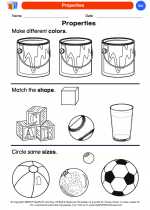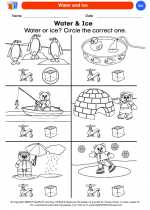Latitude
Latitude is a geographic coordinate that specifies the north-south position of a point on the Earth's surface. It is measured in degrees, minutes, and seconds north or south of the equator, which is designated as 0 degrees latitude.
How to Understand Latitude
Imagine the Earth as a sphere, with the equator as the middle line. Lines of latitude run parallel to the equator, with the North Pole at 90 degrees north latitude and the South Pole at 90 degrees south latitude.
Key Points to Remember
- Latitude measures how far a location is from the equator.
- The equator is 0 degrees latitude, and the poles are 90 degrees north and south latitude.
- Lines of latitude are also called parallels.
- Latitude influences climate and weather patterns.
Studying Latitude
To study latitude effectively, it's important to understand the concept and its significance in geography and navigation. Here are some key topics to consider:
1. Importance of Latitude
Latitude plays a crucial role in determining climate zones and weather patterns. Locations closer to the equator generally experience warmer temperatures, while those closer to the poles tend to be colder. Understanding latitude helps in predicting and understanding climate variations.
2. Using Latitude for Navigation
Latitude is an essential component of navigation, both on land and at sea. It is used in conjunction with longitude to pinpoint specific locations on Earth's surface. Understanding latitude is fundamental for using maps, GPS systems, and celestial navigation techniques.
3. Latitude and Cultural Geography
Latitude has influenced the cultural and historical development of civilizations. For example, regions closer to the equator may have different agricultural practices and cultural traditions compared to those in higher latitudes. Exploring the relationship between latitude and culture can provide valuable insights into human geography.
By grasping these key concepts and their real-world applications, you can develop a deeper understanding of latitude and its significance in the study of Earth's geography.
[Latitude] Related Worksheets and Study Guides:
.◂Science Worksheets and Study Guides Kindergarten. Matter

 Coloring Worksheet
Coloring Worksheet
 Coloring Worksheet
Coloring Worksheet
 Coloring Worksheet
Coloring Worksheet
 Coloring Worksheet
Coloring Worksheet
 Coloring Worksheet
Coloring Worksheet
 Coloring Worksheet
Coloring Worksheet
 Coloring Worksheet
Coloring Worksheet
 Coloring Worksheet
Coloring Worksheet
 Coloring Worksheet
Coloring Worksheet
 Coloring Worksheet
Coloring Worksheet
 Coloring Worksheet
Coloring Worksheet
 Coloring Worksheet
Coloring Worksheet
 Coloring Worksheet
Coloring Worksheet
 Coloring Worksheet
Coloring Worksheet
 Coloring Worksheet
Coloring Worksheet
 Coloring Worksheet
Coloring Worksheet
 Coloring Worksheet
Coloring Worksheet
 Coloring Worksheet
Coloring Worksheet
 Coloring Worksheet
Coloring Worksheet
